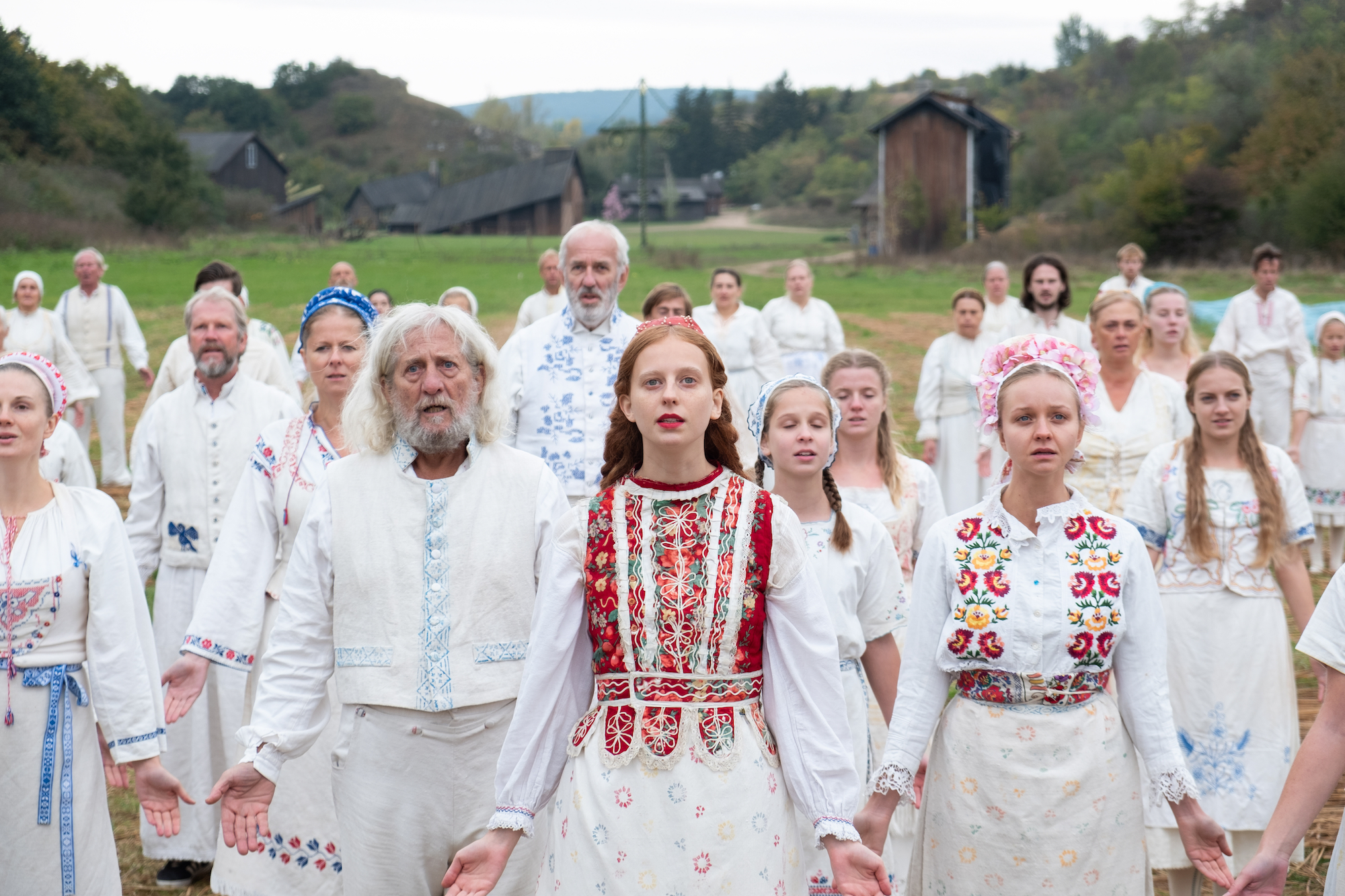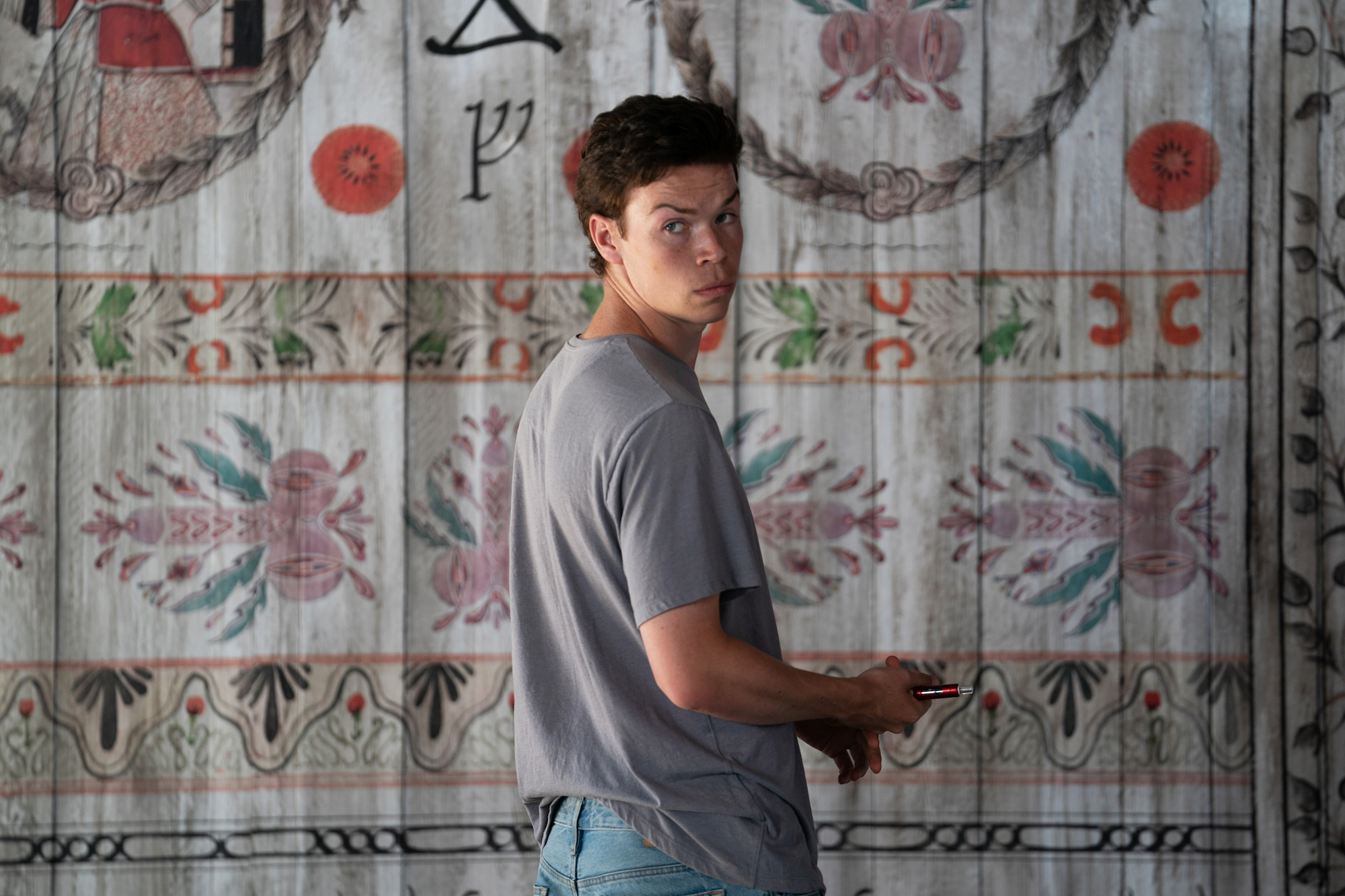‘Midsommar’ Is as Beautiful as a Horror Movie Can Be
Credit to Author: Colin Joyce| Date: Mon, 01 Jul 2019 20:32:02 +0000
Warning: Spoilers for Midsommar are ahead, obviously.
Midsommar, the new film by Hereditary director Ari Aster, can be extraordinarily gruesome. At one point, in extreme close-up, an elderly man’s face is pulverized by a giant hammer. Later, we look mouth agape at a character who has been butchered alive, full segments of their body missing as they lay suspended from hooks, lungs exposed, still inflating and deflating. These kinds of inventive and upsetting images are usually the things that stick with you in horror movies, even if you sorta wish you’d never seen them to begin with.
But Aster and his cinematographer Pawel Pogorzelski aren’t only concerned with those moments. More often, they linger on the small joys of its rural Scandinavian setting: the shimmer of the grass in the wee hours of the morning, the technicolor pockets of the wildflowers on rolling hills, the stillness of the countryside as the film’s central characters lay on their backs during a mushroom trip, gazing up at the sky and out at the nature around them. Most of the film takes place in daylight, a fact to which the camera seems especially attuned. There is nothing waiting in the darkness. The horrors are out in the open, surrounded by natural beauty—which is precisely what makes the film so unsettling, the unique horror movie that reminds viewers that violence is always there, in plain sight.
The film opens with unspeakable tragedy. Dani, played by Florence Pugh, calls her boyfriend Christian after receiving a disturbing email from her sister, worried that something has gone horribly wrong. He calms her down, but it’s to no avail—her sister has already diverted exhaust fumes into her childhood home, killing herself and their parents. It’s a tone-setting event for a film that meditates on the place that violence and grief occupy in daily life. That it happens without warning at the film’s onset seems to say that death is random, that evil can come from anywhere, that pain and grief are inescapable. Being alive means experiencing moments like this.
Christian was on the verge of breaking up with Dani, but the tragedy binds them. Out of a sense of obligation, he invites her to join him on a trip to the Swedish village where his grad school buddy Pelle is from. They’re joined by Christian’s friends Josh—whose thesis is about Scandinavian mid-summer festivals, pagan celebrations of the summer solstice believed to date back to the Stone Age—and Mark, an incessantly vaping dirtbag who seems to be along on the trip mostly as an avatar for the hedonistic insensitivity of Americans on vacation abroad.

The setting is idyllic and sweet, but something is not right. The people from Pelle’s village—whom he refers to as his “family”—wear all white and play foreboding songs on folk instruments and display carved sigils and grotesque drawings in their dwellings and public squares. Mark glibly asks if they’ve stopped in Waco, in an apparent reference to the Branch Davidian cult that once called the Texas city home.
The festival they’ve come to the village to celebrate begins with a feast, but then two elders throw themselves off a cliff to their death. Other leaders in the village attempt to reassure the newcomers that this is just how things are done around here, that they believe in the idea that nature is a cycle. But everyone is shaken, as you might be if you found out that your friend was part of a pagan death cult. Dani and her friends slowly realize that they’ve been invited to the village to participate in these festivities, which they end up doing with a mixture of trepidation, ethnological curiosity, and perverse enjoyment. Some eventually realize that getting out is a matter of life and death, as others immerse themselves more deeply. There are few limits to the hedonism, save one. One villager, explaining how reproduction works in a such a cloistered community, remarks, “We respect the taboo of incest.” So that’s good, I guess.
What’s most striking about the cliff scene, and the other depictions of graphic violence, is how those upsetting moments are shot. The deaths happen in broad daylight and the camera never pans away, even offering the most nauseating moments in close-up shots. The visitors cry and wail or stare in shocked silence, but the townspeople look on stoically, in the way one might during a routine religious ceremony. The tension recedes, and it’s back to more shots of children playing and people gathering flowers or working in gardens. For Pelle’s people, this is just a part of everyday life, which makes it all the more chilling.
Not that you would expect it from Aster, given how masterfully paced Hereditary was, but there’s none of horror’s cheap tricks here—no real jump scares, no pornographic gore. The film is straightforward and forthright about what horrors the village holds, telegraphing it in pictograms painted in the cabin that all of the young people sleep in. It tells you, this is what violence is going to happen, and then it does.

This brilliant tonal whiplash extends to the score, composed by the British producer Bobby Krlic, who’s best known for making creeping, bass-heavy drones under the name the Haxan Cloak. Here, Krlic employs the human voice and traditional Nordic instruments to craft slow-moving pieces that dive between lilting melody and atonal mayhem. One piece, toward the end of the film, starts with the sort of ascendant strings that wouldn’t sound out of place on a Sigur Ros record, only to abut in a screeching freefall as absolute pandemonium unfolds onscreen. The beauty and the chaos are intertwined. One can always give way into the other at any moment.
It’s that feeling that makes Midsommar such a striking film, and a worthy successor to Hereditary. It’s precessor’s whole demon-possession thing might prove to be more of a crowd pleaser for fans of traditional horror tropes, but Midsommar captures something deeper about existence. In its unflinching gaze, it’s a reminder that horror isn’t something that happens in darkness, removed from mundane reality. It’s as quotidian as your morning cup of coffee, or brushing your teeth at night.
Like 1973’s The Wicker Man, which also features orgiastic pagan rituals, Midsommar seems to fixate on the parts of human nature that are uglier than we like to admit to ourselves. It suggests that only social conventions, and arbitrarily designated systems of morality, keep us from literally tearing each other limb from limb, from setting the whole world on fire. But the fact is, we do anyway. Domestic violence murder rates are on the rise. Already in 2019, 11 trans people, largely trans women of color, have been shot or killed in other violent attacks, according to the Human Rights Campaign. As we enter the long, dry summer months, we have to confront that soon, our world will very literally be on fire again. This is how it is now. We are always at the precipice of violence, death, and mayhem. The question is: Are we complicit?
This article originally appeared on VICE US.